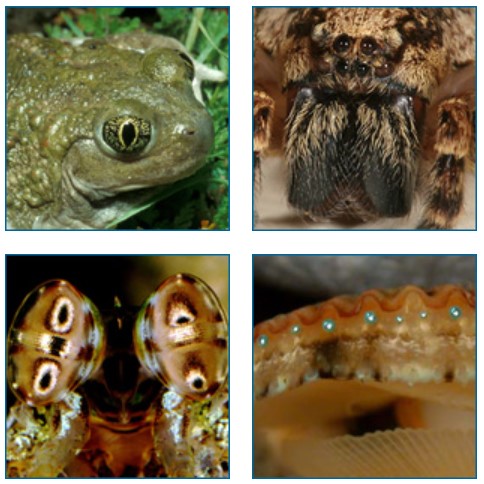Shark and mouse eyes are homologous to one another. Despite their many differences (e.g., aquatic vs. terrestrial, predator vs. scavenger), sharks and mice are closely related; they are both vertebrates and share many other anatomical homologies (such as a vertebral column). The phylogeny below is based on anatomical and genetic studies and shows the evolutionary relationships among all of our visionaries. Notice how closely related sharks and mice are! And even though sharks and squid both have eyes adapted for seeing in the ocean, they are not very closely related, and their eyes are analogous. Along the same lines, squid eyes and mouse eyes look similar and have similar layouts, but those similarities are analogies that evolved through convergent evolution.

Of our five organisms, only the vertebrates (represented by sharks and mice) inherited their eye structures from a common ancestor. In the other three cases, eyes evolved independently and are analogous. In fact, across the whole tree of life, complex eye types may have evolved independently many more times.

Still similar
Despite their separate evolutionary origins, even analogous eyes (like those of sharks and squid) have basic similarities. All eyes, wherever they evolved on the tree of life, can sense light and are used by organisms to learn more about their environments. Many analogous eyes share similar cell types — and those cells contain similar light-sensing molecules. But is there more that they share?
To answer this question, let’s take a look inside a mouse embryo while it builds an eye…
